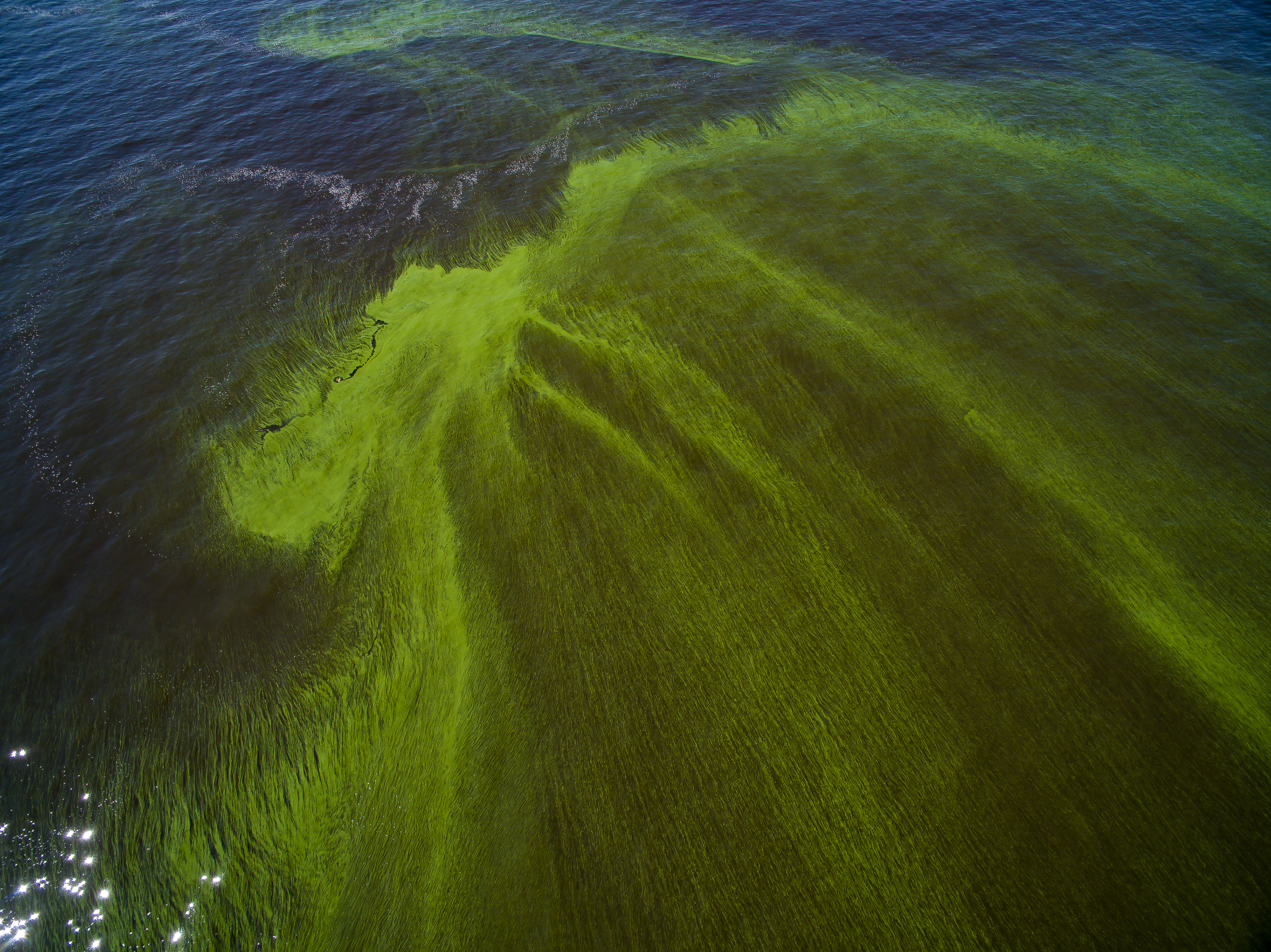A Drone’s-Eye View Of An Algae Bloom
This picture, shot by a drone, reveals the verdant fingers of a blue-green algae bloom.

This algal bloom on Lake Erie, shot using a drone at the end of July, was a little larger than a football field at the time. Credit: Phil Myers/Toledo Aerial Media
That electric green you see, juxtaposed with the water’s deep blue, makes for an eye-catching image. But in reality, it’s the “visual manifestation of an unhealthy ecosystem,” according to Timothy Davis, a molecular ecologist at the National Oceanic and Atmospheric Administration (NOAA). The green signifies blue-green algae (which are technically photosynthetic bacteria), and in great abundance, they can wreak havoc on lake ecosystems. Harmful algal bloom, or HAB, crops up in the Great Lakes annually around this time, and for Lake Erie, pictured above, this year is lining up to be one of the worst that Davis has seen in a decade.
“Until June we were actually predicting a smaller than average bloom,” he says, “and then June happened.” It was one of the wettest on record, leading to more agricultural runoff containing nutrients—phosphorus, mostly, and some nitrogen—into the lake, which has spurred blue-green algae growth.
Those nutrients come primarily from fertilizers and manure that drain from farmland into nearby watersheds, eventually wending into larger water bodies such as Lake Erie. How much gets in and how quickly depends a good deal on weather. “When we have a drought, everything is great in Lake Erie,” says Jeff Reutter, a special advisor to the Ohio Sea Grant & Stone Lab, which works with NOAA to issue HAB forecasts. “When we have a really wet year, we get a huge load of phosphorus coming in.”

Farmers prefer fertilizer made with dissolved phosphorus, which helps crops grow better than particulate phosphorus. But blue-green algae thrive on it, too. “Since the mid-’90s, the amount of dissolved phosphorus going into Lake Erie [from the nearby Maumee River] has gone up 144 percent,” says Reutter. And when the water warms up to around 60 degrees Fahrenheit, the algae blossoms.
Harmful algal blooms stop light from penetrating the water, preventing shallow, bottom-dwelling plants from photosynthesizing. Then, when the algae decay, bacteria that break them down consume oxygen in the process, imperiling fish. Plus, there’s evidence that a species of blue-green algae common in Lake Erie blooms—Microcystis aeruginosa—can be toxic to humans, potentially causing rashes, nausea and vomiting, and in extreme cases, liver damage. According to Reutter, this year’s lake bloom has already made several people sick.
“We do know that [the blooms] do come back next year if nothing gets done,” Davis says. “The million dollar question is, what can we do to make the blooms smaller and less toxic? We need to reduce the nutrients coming in off of the land.” The solution may result in less compelling photos, but ultimately healthier water.
Michele Berger is a journalist who writes about science and the environment.